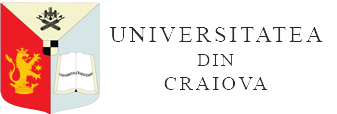HEAVY METALS ACCUMULATION IN SOIL AND CELERY ROOT (APIUM GRAVEOLENS L.) HARVESTED FROM THE POLLUTED AREAS IN SIBIU COUNTY, CENTRAL ROMANIA
DOI:
https://doi.org/10.52846/aamc.v52i1.1370Abstract
Heavy metals are harmful environmental contaminants that are mostly the result of human activities. Vegetable roots may easily absorb heavy metals, which can then accumulate up to high levels in the edible sections. The celery root is a vegetable that is frequently cultivated in individual gardens and its production in polluted soil might provide a risk to the consumer's health, not necessarily due to the amount ingested but rather due to the cumulative effect of long-term usage.
The present study is aimed to estimate the bioaccumulation of heavy metals (cadmium, lead, copper, and zinc) from the soil in the celery root, harvested from 26 households located in the polluted areas (Axente Sever, Agârbiciu, Bazna, CopșaMică, Micăsasa, Șoala, and Târnava). Total soil (0-20 cm) and celery root heavy metals contents varied as follows: for Cd (soil = 0.10 mg/kg – 14.80 mg/kg; celery root = 0.058 mg/kg – 1.254 mg/kg); for Pb (soil = 28 mg/kg – 326 mg/kg; celery root = 0.022 mg/kg – 0.620 mg/kg); for Cu (soil = 25 mg/kg – 163 mg/kg; celery root = 0.60 mg/kg – 2.51 mg/kg); for Zn (soil = 117 mg/kg – 1076 mg/kg; celery root = 3.1 mg/kg – 11.7 mg/kg). The highest values of correlation coefficients were obtained for the regression curves established for the estimation of Cd, Pb, and Zn accumulation in celery root (r = 0.788 for Cd, r = 0.796 for Pb, and r = 0.656 for Zn). In the case of copper, the linear correlation coefficient is relatively low (r = 0.092).


